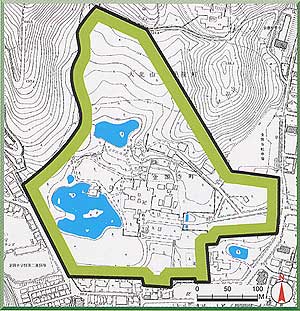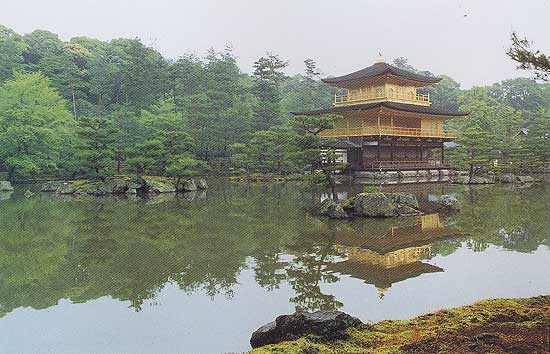| JAPANESE | |
| M. Rokuon-ji (Kinkaku-ji) | |
| Golden Pavilion, the admiration to the imperial culture by the man of power | |
| Establishment: The late 14th century (1397) | |
| Originally built in the Kamakura Period as an artistocrat's coutry estate, and taken possession of in 1397 by retired shogun Ashikaga Yoshimitsu, who turned it into a supremely refined and elegant country villa called Kitayama-dono (the Kitayama Palace), Rokuon-ji's birth as a Buddhist temple occured in 1422, when, following Yoshimitsu's death, it was converted into a Zen temple, with the monk Muso Soseki as its founding abbot. Whereas the temple later fell into decline, the Shariden (commnly known as Kinkaku or "Golden Pavilion") and temple gardens were largely restred during the Edo Period. The temple garden was designed to incorporate Mt. Kinugasayama as shakkei (borrowed scenery). In the course of creating the garden, various selected rocks were installed in the existing pond; the Shariden was constructed at the edge of the pond; and a viewpoint was set at the top of the mountain. The Kinkaku, with its shingled roofs and with its second and third floors entirely gilded with gold, epitomizes the so-called "Kitayama culture" of the period, and reveals Yoshimitsu's dynastic aspirations. This building was burned to the ground in 1950, and an exact reproduction of the original building was completed in 1955. |  |
 |
|
| Photo by Kanzaki Junichi | |
Map of "Historic Monuments of Ancient Kyoto" |
|